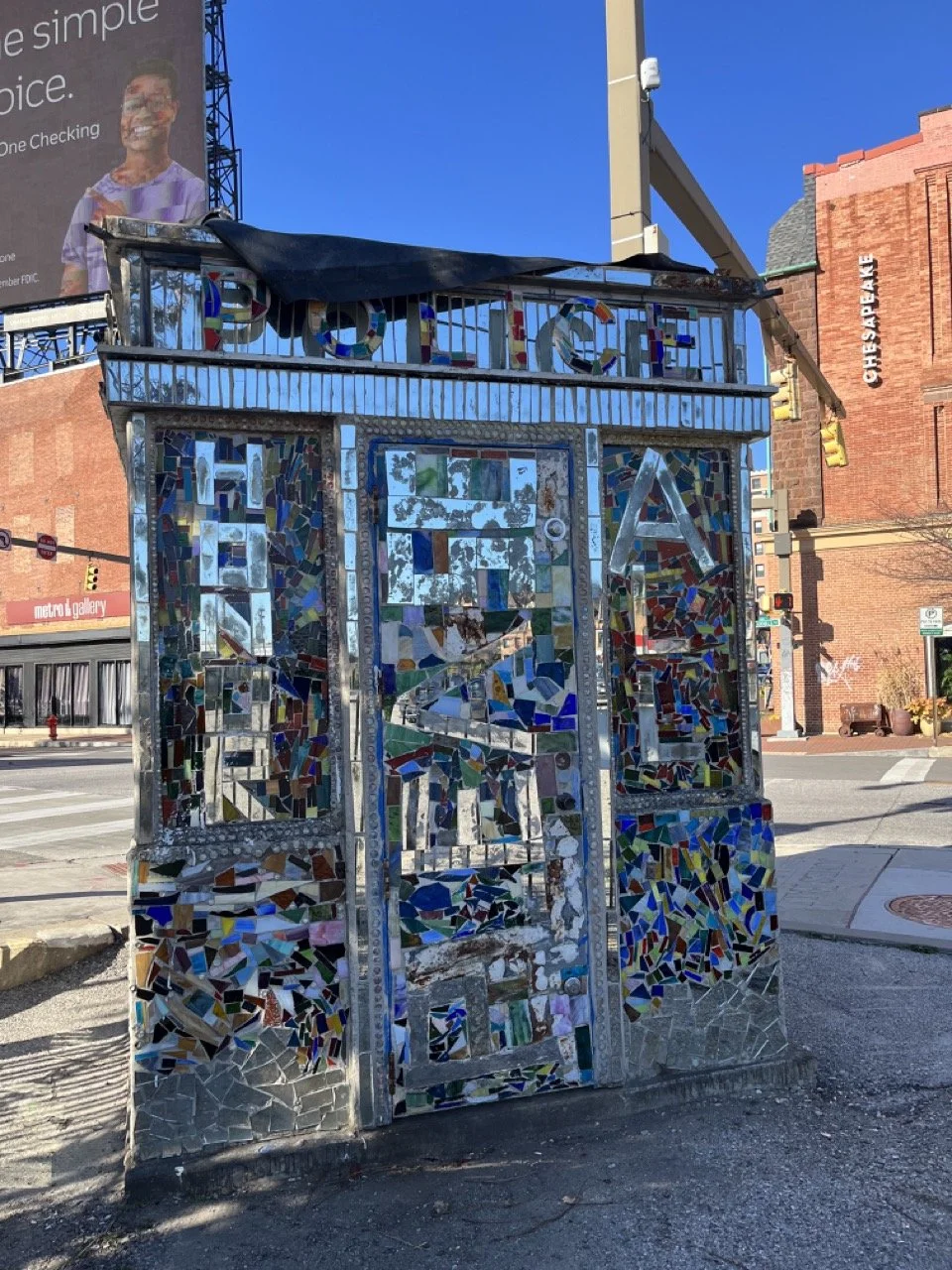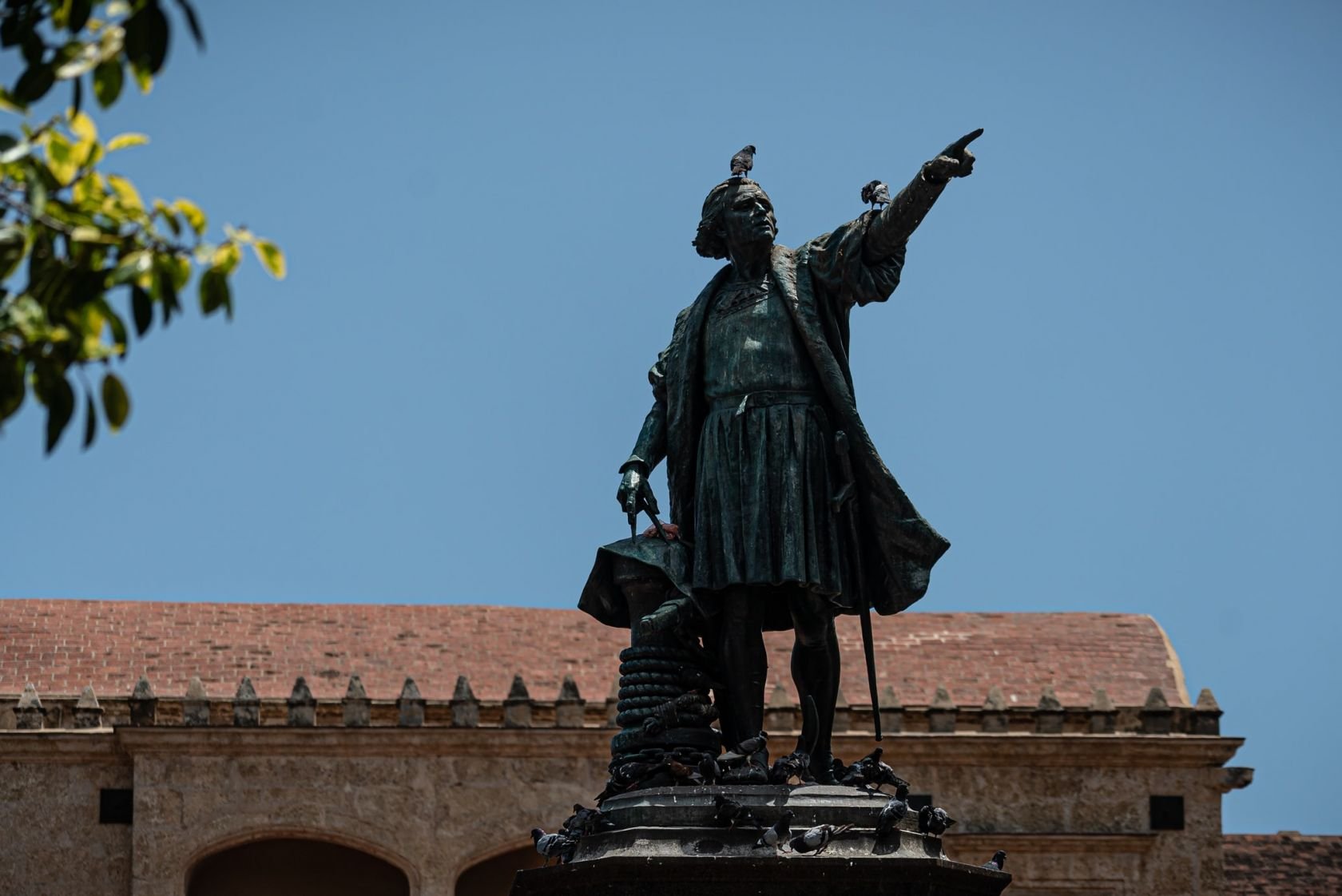Activist Artist You Should Know About: Loring Cornish and his Meaningful Mosaics
Via London Allen Written By London Allen
December 15, 2023
Before I knew the name Loring Cornish, I gravitated towards his work. I was walking to the laundromat, heaving two bags under my arms as my shoulders slightly burned from the strain of the weight. A flash of a shiny surface caught my attention as I traveled through Station North in the late summer heat. A mosaic constructed of maybe hundreds of tiny mirrors was attached to an old police box, and this attention-grabbing structure was the work of Loring Cornish.
Cornish is a Baltimore native from Druid Hill Park known for his impressive transformation of spaces into floor-to-ceiling installations. This police box jumped out at me when I first viewed Cornish’s work. In the same way that the visionary artist describes being drawn to mosaics as an accident, it was an accident that I stumbled upon the police box and was starstruck by it as it occupied a random street in Baltimore. Cornish’s artistic journey turned to mosaics once he used found materials to cover entire walls. He discovered this technique while repairing a home he was renting. Cornish used broken titles to cover broken holes on the floor, which was the catalyst for his future work. Cornish continued this path when renovating his home, covering one wall in pennies, and he poured literally every cent into the project. It was this 1997 home project that propelled Cornish’s artwork into the spotlight.
“Creative acts of social justice constitute life’s highest performance art”
The irony of using a police box to draw attention to police brutality and injustices of the legal system in America is particularly significant, especially in a city like Baltimore. Baltimore City police are infamously corrupt, and many of the city’s citizens are continuously battling against the ways in which they seem to harm more than help. The police box, in particular, stands out because of the various messages constructed with the glass mirrors on each side of the structure. The statements displayed across the piece, such as ”give hope please” and ”respect life please,” reflect the spirit of a large community of Baltimoreans who desire a policing system we can trust and that views us as people instead of threats or targets. Its location on the corner of N Charles Street and E Lanvale Street allows the vital message to be shared for anyone to see and reinforces our right to be heard as Baltimoreans.
The piece I stumbled upon immediately fascinated me. The captivating police box adds to Baltimore's cultural atmosphere as a city where artists can thrive. Cornish’s ability to transform what would otherwise be abandoned or succumbed to destruction is admirable. Furthermore, his use of found objects to construct his work speaks to the resourcefulness of artists with limited resources. Cornish’s approach not only invites unique installations but also bold statements. It was Rebecca Alban Hoffberger who said, “Creative acts of social justice constitute life’s highest performance art,” and Cornish is a wonderful example of this.
Cornish’s work not only inhibits the streets of Baltimore but also can be viewed at the American Visionary Art Museum, which platforms Cornish’s work to a larger audience. As a part of the exhibit "If You Build It, They Will Come", the exhibition showcases “visionary artists and their environments.” While I would argue the exhibit draws more attention to other featured artists in the show, it effectively makes one notice Cornish as he is the only Baltimore native featured. When I entered this exhibit, I was unaware that Cornish’s work was already in my neighborhood, and it allowed me to put a face and name to the artwork. The impact his installation had on me, without my realization, was astonishing. This impact elucidates the importance of public art because it can alter one’s experience in cities like Baltimore. Additionally, it’s a way for Baltimoreans to share and enforce their messages and ideas that are significant to the city’s citizens. Lovely art covers Baltimore streets and buildings, but when we become accustomed to viewing it, we can almost forget how valuable and special it is.
The police box was installed in 2015, and Cornish now creates his mosaics in other parts of the city. His current home on Parkwood Ave houses his recent installations and welcomes all visitors. Similar to the police box, Cornish’s floors are embedded with welcoming and empowering glass messaging. Cornish continues to inspire young artists and Baltimore through his work and meaningful messages, and he is unafraid to let inspiration strike at any time. With no formal artistic training, he reminds us of the importance of trusting in one’s own creative vision and that trash can be turned into treasure.
Written by: London Allen
About the Author:
London (she/they) is the Editorial Department Head and loves writing about educational topics and current issues in the world.
Check out our social media for more resources:
Additional Reading
June 15, 2023
Intro to Decolonization: US History
Identity, Oppression, US Politics, Race
June 15, 2023
September 12, 2023
Leave a comment





